Underground Outdoor: Advertising displays in metro (subway)
For a long time metro resisted advances of digital advertising. Underground platforms were decorated with small and large posters, inside metro cars all space was covered with colorful leaflets. In an attempt to increase advertising revenue even entire trains are sometimes wrapped in advertising posters turning the train into a gigantic advertising billboard. But digital advertising was not allowed underground for a long time. No fortress can last that long. Mass transit means a lot of potential clients and video is the most effective way of selling goods and services.
First attempts to install digital advertising in metro started from outside. In 2005, New York Metropolitan Transportation Authority allowed to place a network of 10 mm SMD-based LED screens (manufactured by a well-known British company Lighthouse) over entrances to subway stations in downtown New York. At that time the project was ambitions and enormously expensive. Moreover, SMD was as yet an immature technology. A few years later it became evident that the project was a mistake; it was strategically wrong to launch it at that time.
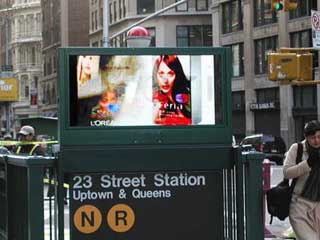 |
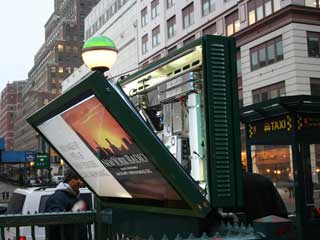 |
| Advertising displays in New York at subway entrance | |
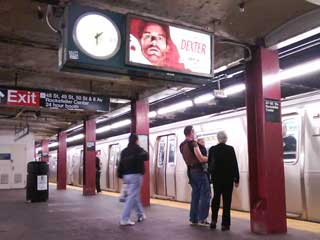 |
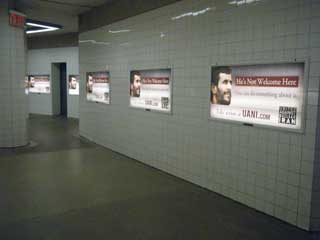 |
| Platform advertising display in New York subway | Digital tunnel – advertising displays in an underground passage between stations in New York |
Small size LED screens lost the battle to a dynamically developing technology of plasma and LCD screens. As a result by 2009, all Lighthouse screens were replaced by gigantic TV screens protected from moisture and vandals by glass panels. These screens are not very effective during sunny days (not really numerous in New York), but offer better profit margins considering their lower cost.
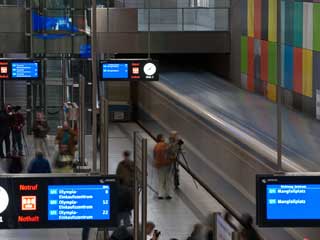 |
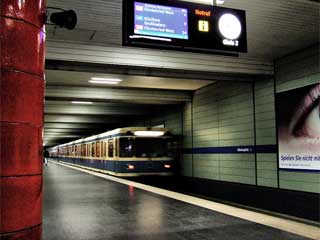 |
| Advertising displays in metro platform in Dresden (Germany) | |
However, the 2005 project played an essential role in breaking down resistance to digital advertising in transit authorities. Digital technology rushed in through the breach. Underground passages between stations, platforms and finally even train cars started getting equipped with digital displays to show newsreels and advertising clips. Projects around the world multiplied overnight: Submedia and SideTrack Technologies (competitors in the US market) launch pilot projects of tunnel video in Atlanta, Los Angeles, Philadelphia: a series of digital screens located in the tunnel which light up when a train passes by.
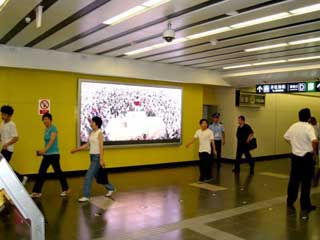 |
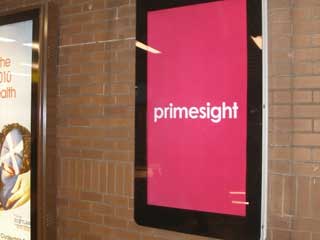 |
| Advertising display in Hong Kong metro | Advertising display in Glasgow metro |
MTR Corporation Hong Kong with the help of Datacraft and JCDecaux launched a series of advertising monitors on platforms and escalator tunnels. Ströer Kentvizyon, the largest Turkish developer of OOH advertising systems, set up a digital monitor network on 16 metro stations in Istanbul and Ankara (using Scala software). Digital monitors (based on Signagelive platform) were installed in underground passageways and stations of Glasgow and helped much to improve this one of the oldest metro system in the world. To enumerate all the projects is practically impossible.
Anyway, it all started with digital monitors in public areas of tunnels and platforms. Useful, informative, but not enough… People spend much more time riding on trains…
 |
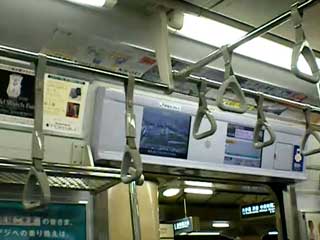 |
| Advertising display in Beijing metro | Advertising display in Tokyo metro car |
Next logical step was to combine an advertising monitor and informational display. Right on time, the large LCD monitors became more affordable. On large TV it was easy to split the screen into several fields dedicated to advertising and informational running text. Software companies developed new players and packages for easy editing of playlists, thus contributing to fast spread of digital DOOH technology underground.
Finally, the most daring operators decided to place digital monitors inside the metro cars and show both advertising and live video. One such project was launched by ChinaVision in Shenzhen metro. Passengers may watch news and popular ads which greatly shortens the trip.
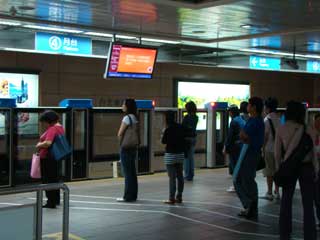 |
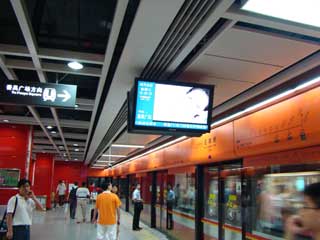 |
| Advertising displays in Shenzhen metro | |
Digital advertising in metro wins over the new space surprisingly fast. Today nobody wants to be left behind. Even Moscow metro authorities finally decided to experiment and install advertising displays in the platforms (operated by “Olimp” advertising company). The network turned out to be primitive but it’s still better than nothing.
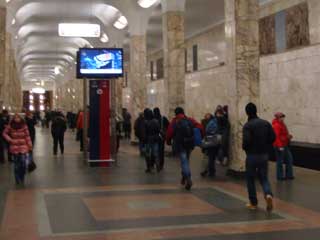 |
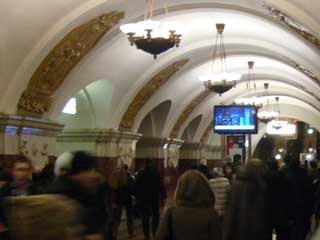 |
| Advertising displays in Moscow metro | |





